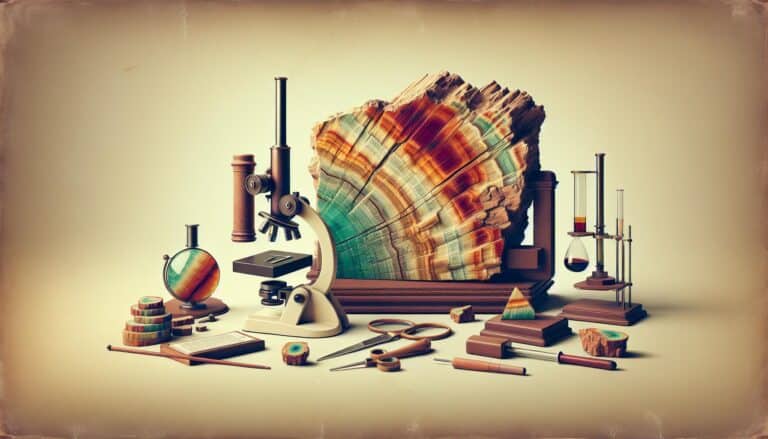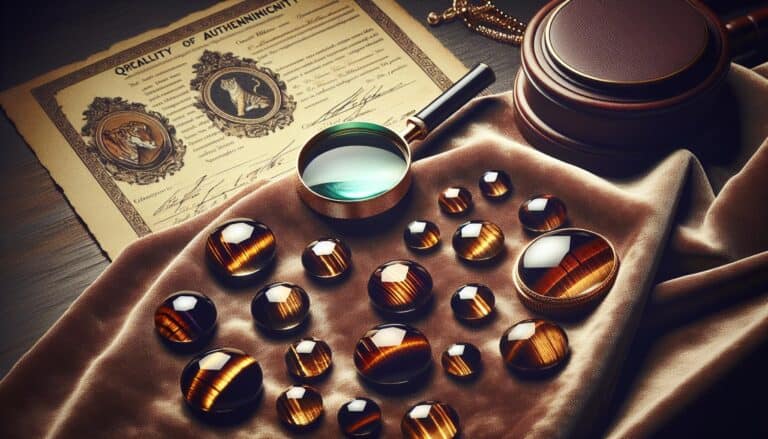Curious about the value of bismuth?
You’re not alone. This lesser-known metal has unique properties that make it surprisingly valuable in various industries. From pharmaceuticals to cosmetics, bismuth’s versatility is reflected in its price.
Understanding bismuth’s worth isn’t just about checking the latest market prices. It’s about recognizing the factors that influence its value. Whether you’re a hobbyist, investor, or just plain curious, getting to grips with what drives bismuth’s price is essential.
Stay tuned as we dive into the world of bismuth and uncover the secrets behind its market value. You’ll discover why this metal might be a hidden gem in the commodities market.
Bismuth value is influenced by its unique properties, industrial demand, and rarity. High-quality bismuth, especially with aesthetic appeal for collectors, commands higher prices. Market demand from industries like pharmaceuticals and cosmetics also affects its worth. Prices vary based on purity, source, and quantity purchased.
What Is Bismuth?
When you think about valuable metals, your mind probably jumps to gold, silver, or platinum. But there’s another player in the market that often doesn’t get the spotlight it deserves: bismuth. This brittle, crystalline, white metal with a slight pink tinge is as intriguing as it is useful. Mainly obtained as a by-product from the refining of lead, copper, tin, silver, and gold ores, bismuch is more than just a bycatch of mining operations.
Unique Properties of Bismuth
Bismuth holds a unique set of properties that make it stand out:
- It’s the most diamagnetic of all metals, which means it’s repelled by magnetic fields, making it useful in certain industrial processes.
- Its low thermal conductivity makes it perfect for use as a soldering substitute for lead.
- High resistance to oxidation and corrosion helps it to withstand harsh environments.
- A relatively low melting point allows it to form alloys that expand upon solidifying, integral for applications that need tight mechanical attachments.
Uses Across Industries
It’s bismuth’s versatility that has led to its wide application across multiple industries:
- Pharmaceuticals: It’s a key ingredient in medications for stomach and intestinal conditions.
- Cosmetics: You’ll find it in pearlescent pigments for makeup and nail polish.
- Ammunition: It’s becoming a popular non-toxic alternative to traditional lead shot in shotgun shells.
- Art and Jewelry: Bismuth’s unique crystalline structure and colorful oxidation layer are prized for decorative purposes.
Understanding the broad utilization of bismuth helps in appreciating its value beyond the raw numbers. The metal has secured its niche, with its unique properties complementing its industrial significance. As technology evolves and industries search for sustainable and non-toxic alternatives, the demand for bismuth might just be on an upward trajectory. Keep in mind that the price can fluctuate due to various factors including market demand, the cost of extraction and processing, geopolitical stability, and technological advancements that may either increase its utility or replace it with alternatives.
Bismuth Prices: Factors That Affect Value

When considering the worth of bismuth, it’s essential to delve into the factors that influence its market value. These factors can vary greatly and are often interconnected, affecting the final price you might pay for this versatile metal.
Color, Clarity, and Cut Quality
Bismuth’s value isn’t solely determined by its applications; aesthetic properties also play a pivotal role. The vibrant colors and intricate crystal formations it exhibits when cooled from a molten state make it a favorite among collectors and artists.
- Color: The iridescent hues ranging from blue to pink to yellow increase bismuth’s appeal. Vivid and more uniform colors typically command higher prices.
- Clarity: Like many minerals, bismuth’s value is affected by its clarity. Specimens with fewer impurities and crystalline defects are more sought after, hence more valuable.
- Cut Quality: While not applicable in the same sense as gemstones, the presentation of bismuth crystals including size and complexity of the geometric patterns contribute to its desirability and value.
Market Demand and Availability
The current state of the market can greatly influence the price of bismuth. Several factors within the market affect demand and availability:
- Demand in Various Industries: With its application ranging from pharmaceuticals to art, a surge in demand from any of these industries can drive up bismuth prices.
- Substitution and Competition: Bismuth often competes with other metals that can fulfill similar roles. Any shift towards or away from bismuth in manufacturing or production can reflect in its price point.
- Geopolitical Factors: Since bismuch is mined primarily in a few countries, changes in export policies or international trade agreements can affect its accessibility and, in turn, its market value.
Keep in mind that bismuth is often a byproduct of lead and copper mining. Therefore, its availability is tied to the extraction rates and market conditions of these primary metals. Fluctuations in their markets can inadvertently impact the supply and price of bismuth.
Understanding these elements is just the beginning of grasping how much bismuth is worth at any given time. The market is dynamic, and prices continually respond to the complex web of supply, demand, and consumer interest.
Understanding Bismuth: A Rare Gem

When delving into the value of bismuth, it’s essential to understand why it’s considered a rare and unique mineral. The rarity is bound up with its occurrence and the specific conditions required for its formation.
The Rarity of Bismuth
Bismuth’s scarcity stems chiefly from its very unique properties and occurrence. Unlike the more common minerals and metals found abundantly within the Earth’s crust, bismuth is relatively sparse. It’s often discovered as a byproduct of the refining processes for other metals, such as lead and copper. This means that bismuth’s availability is directly tied to the mining activity for these more prevalent resources.
Merely a small percentage of the Earth’s crust is composed of bismuth, and that’s why its rarity bolsters its value. Bismuth isn’t just found anywhere; it requires specific geological conditions to form. Recognizing this fact helps explain the market dynamics that affect its price.
Origins and Characteristics
Bismuth originates deep within the Earth, under conditions that are not routinely replicated, making its deposits limited. It’s also typically found intermixed with other metal ores, necessitating a separation process that adds to its scarcity and value.
This metal boasts a remarkably low melting point relative to its dense, stable atomic structure, which is of significant interest in scientific and industrial applications. Bismuth is immediately recognizable due to its vibrant iridescent coloration and spiraling, stair-stepped crystal structure, characteristics that make it especially appealing for use in decorative items and jewelry.
Beyond its aesthetic allure, bismuth’s physical properties lend it to diverse uses across various industries. It’s non-toxic, making it a safer substitute for lead in many applications. Its diamagnetic properties and ability to expand slightly upon solidification from a molten state hold utility in everything from pharmaceuticals to fire detection systems.
Understanding these inherent characteristics of bismuth is vital for grasping its value. Each aspect — from its rarity to its unique physical traits — plays a role in shaping its worth in today’s market.
Bismuth Grading and Valuation
When you’re looking to buy or sell bismuth, it’s crucial to understand its grading system. Just like with precious metals, bismuth grades help determine its purity level and quality which in turn affects its value on the market.
The Grading System for Bismuth
The grading of bismuth is somewhat informal compared to other commodities. However, certain parameters are universally acknowledged in assessing the quality of bismuth. These typically include:
- Purity: The bismuth content percentage in the material.
- Physical condition: Appearance, brightness, and integrity of bismuth crystals or ingots.
- Source: Origin of the bismuth, which might influence its properties due to differing extraction techniques or natural compositions.
Bismuth is not traded on an open market like gold or silver, so it doesn’t have an official grading scale. However, buyers and suppliers often refer to the level of impurities found in the metal when discussing its grade. The less contamination from other metals or materials, the higher the grade and the more valuable the bismuth.
Certification and Appraisal
Certification and appraisal are important for anyone dealing with bismuth, especially if you’re involved in buying or selling large quantities or highly pure samples.
- Certification: This is usually provided by the seller or a recognized body, confirming the grade and quality of bismuth. It assures you that the product meets certain standards and is as described. Certification can be essential for industrial buyers who require materials that meet strict specifications.
- Appraisal: Involves a detailed inspection and evaluation of the bismuth to determine its value. An appraisal might consider factors beyond purity, such as market demand, available supply, and intended use. This process can be completed by a professional who specializes in metals or a commodity expert.
Obtaining a professional certification or appraisal can impact the value of your bismuth, ensuring that you’re getting a fair price or offering a competitive rate. Always look for credible sources when seeking these services to maintain confidence in your transactions.
Current Market Trends in Bismuth Pricing
The bismuth market is subject to constant fluctuations, influenced by a variety of factors ranging from industrial demand to geopolitical shifts. Recently, the market for bismuth has shown an increasing trend in price due to several reasons.
One major factor contributing to the rise in bismuth prices is the growing use of bismuth in green technologies. As companies and governments push for environmentally friendly products, bismuth’s non-toxic characteristics make it a substitute for lead in various applications like paint, cosmetics, and solders. Increased demand from these sectors often translates to higher prices.
Bismuth is also making headways in the pharmaceutical industry, commonly used in medications to treat certain digestive disorders. The medicinal utility of bismuth, alongside its cosmetic and industrial applications, creates a diverse demand profile, sometimes leading to price volatility.
Geopolitical events can impact the mining activities and supply chain for metals, including those that produce bismuth as a byproduct, such as lead and copper. When the availability of these primary metals falls, bismuth’s supply can also diminish, potentially driving up its market price.
To give you an idea of recent trends, here’s an indicative table on bismuth prices over the past year:
| Quarter | Average Price (USD per pound) |
|---|---|
| Q1 2022 | 4.50 |
| Q2 2022 | 4.75 |
| Q3 2022 | 5.00 |
| Q4 2022 | 5.20 |
Do note that the rates vary based on purity, source, and quantity purchased. Bulk buyers typically negotiate more favorable terms. Additionally, trade tariffs and transportation costs can affect the final price of bismuth in your local market.
For up-to-date pricing, you’ll want to refer to commodities market reports or contact suppliers directly. Keeping a close watch on the factors affecting bismuth’s availability can help you anticipate price movements and make informed decisions whether you’re an investor or end user.
The Most Expensive Bismuth
When considering the value of bismuth, it’s crucial to explore the factors that lead to a higher price tag. Certain bismuth specimens are considered more valuable due to unique characteristics that differentiate them from common samples. These can include size, shape, rarity, and even historical significance. Collectors and investors often seek out these premium examples, driving up their market value.
High-quality bismuth crystals with exceptional aesthetic appeal can fetch steep prices. Collector-grade bismuth is impressive: with its intricate geometric patterns and iridescent hues, it’s a true display of nature’s artistry. These specimens are graded on a variety of factors, including:
- Crystal size and formation
- Color vibrancy and complexity
- Rarity and provenance
- Overall aesthetic
The market for bismuth as a collectible isn’t as large as that for precious metals like gold or silver, but niche interest creates substantial demand for standout pieces.
Sometimes, bismuth is sold in larger quantities for industrial or commercial use, and this can also command high prices. The cost per pound may increase significantly if the bismuth is of high-purity or if it’s required for a specialized application. Your connection to suppliers and the current market demand play a role in the pricing you’ll encounter.
To give you an idea of the price range for exceptional bismuth specimens, here’s an indicative table based on recent sales:
| Description | Size | Price Range (USD) |
|---|---|---|
| Collector’s Crystal | Small | $50 – $200 |
| Collector’s Crystal | Medium | $200 – $500 |
| Collector’s Crystal | Large | $500 – $1500 |
| High-Purity Ingot | Per Pound | $10 – $30 |
Remember, these prices can fluctuate based on the aforementioned factors and market trends. For the latest sales and auctions of rare bismuth pieces, look to specialized mineral shows or online marketplaces catering to collectors and connoisseurs of unique minerals.
Buying Bismuth: Tips and Recommendations
Where to Purchase High-Quality Bismuth
When searching for high-quality bismuth, it’s essential to investigate reputable sources that specialize in minerals and metals. You’ll want to prioritize vendors that have established credibility within the market:
- Mining Companies: These are direct sources of bismuth and often provide various grades of this element.
- Specialized Online Retailers: Websites that focus on minerals can offer a wide range of bismuth specimens with detailed descriptions.
- Science and Educational Suppliers: They may carry bismuth for experimental and educational purposes, showcasing a different quality spectrum.
Always research the reviews and feedback for these vendors to ensure previous customers had positive experiences. Additionally, attending mineral shows or exhibitions gives you the opportunity to inspect bismuth samples in person, which can be invaluable for assessing their quality.
Ensuring Authenticity and Value
The authenticity and value of bismuth are vital when making a purchase. To make sure you’re getting what you pay for, consider these steps:
- Ask for Certification: Reputable sellers should provide certificates of authenticity that validate the origin and purity of their bismuth.
- Conduct Tests: Simple tests, like checking melting points, can give insight into the purity and composition of bismuth.
- Appraisal Services: For more significant investments, professional appraisals can confirm the value of a bismuth specimen.
Enforcing your knowledge about bismuth’s specific traits and market trends will also help you make informed decisions. Remember that investment in rarer and historical pieces may yield better value retention over time. Keep an eye on market fluctuations and news, as these can influence bismuth’s worth in the long term.
Conclusion: Buying & Selling Bismuth
Understanding the value of bismuth goes beyond its price per pound. It’s about knowing where to source quality specimens and how to verify their worth.
You’ve got the tools to make informed purchases, from selecting reputable sellers to recognizing the significance of rarity and historical value. Stay ahead of the curve by keeping an eye on market trends and always opt for authenticity.
With these insights, you’re well-equipped to appreciate the true worth of bismuth.



![Nevada Rockhounding Sites in [year]: Uncover Treasures](https://observationhobbies.com/wp-content/uploads/2024/01/NIJWaYUzca2OAB9AHgZ3m-768x439.jpg)



